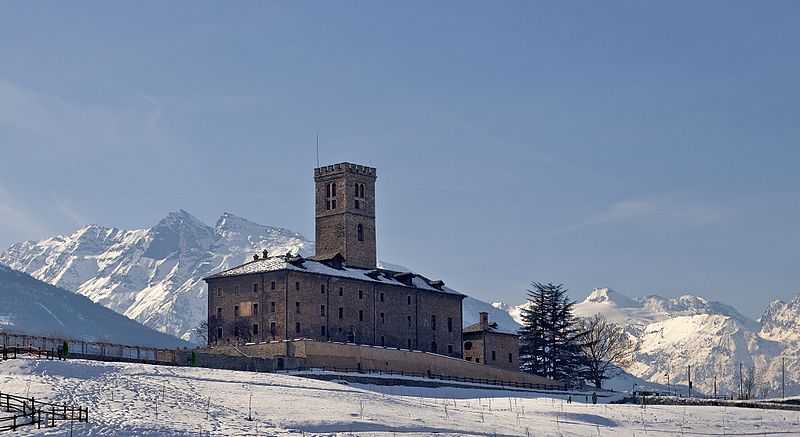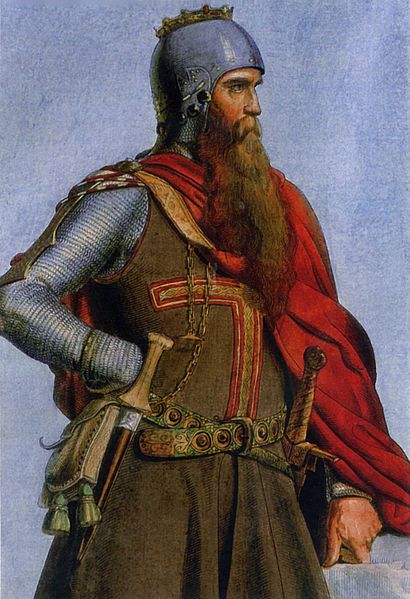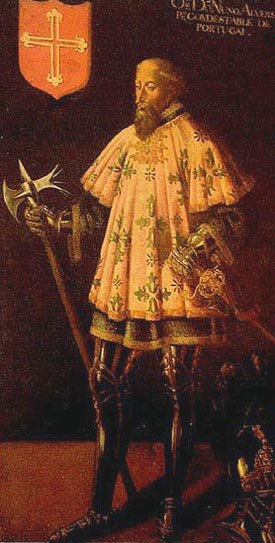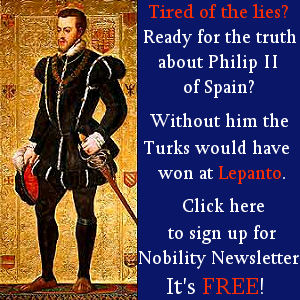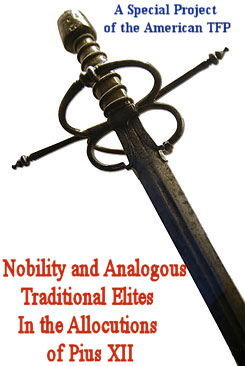Sister Filipina was of a princely line. Her father, Philip II of Savoy, Prince of Acaia, was born in 1344, and had to defend his rights to the paternal fief by force. He was disinherited by his stepmother, betrayed and targeted for death. On December 20, 1368, he was chained and hurled into the icy waters of Lake Avigliana near Saint Michele delle Chiuse Abbey between Piedmont and Savoy.
His only daughter, Umberta Felipa, was born in 1368 in the castle of Sarre. She never knew her father, and when she learned of his terrible fate, became a nun in order to obtain for him the grace of eternal salvation. She took the name of Filipina dei Storgi.
A miraculous deliverance
Prince Philip was wearing a medal around his neck at the hour of the execution. The medal belonged to his ancestor, Blessed Umberto II (1080–1103), sovereign count of Savoy and hero in the defense of the papacy against the unjust claims of Emperor Frederick Barbarrossa.
The assassins fled when Philip’s body disappeared in the water. Yet, unbelievable as it may appear, the prince did not die. He miraculously returned to the surface without being seen by anyone, a favor he attributed to Blessed Umberto’s medal. He set out for exile, leading a penitent’s life from then on. Using a pseudonym, he went on pilgrimages to the sanctuaries of France, Switzerland and Spain, and finally Fatima in Portugal.
Why Fatima? What was there?
Fatima: land of Mary and of Crusades
The recently published documents mention “a church in a tiny city called Fatima, built by an ancestor of our Holy Foundress Margaret of Savoy, Queen Mafalda of Portugal.”7
Queen Mafalda (+1157) was married to Dom Alfonso Henriques (1128–1185), founder of the Kingdom of Portugal. She was a daughter of Amadeus III of Savoy (+1148), count of the Holy Roman German Empire, who died in the Second Crusade, and a sister of Blessed Umberto, to whom the prince owed his life.

The region of Fatima and the nearby lands were taken forcefully from the Moors by King Alfonso. Afterwards the king saw to the colonization and control of the conquered area against the continuous Moorish incursions. To achieve that end, Dom Alfonso, with the participation of Doña Mafalda, granted great extensions of those lands to two select religious orders. He also assigned castles to noble Portuguese, paladins of the Reconquest.
One favored religious order was Citeaux (Cistercians), whose “co-founder” was Saint Bernard of Clairvaux, the great Marian apostle of the Middle Ages, and cousin to the king. The Cistercians erected the celebrated Santa Maria de Alcobaça Abbey, birthplace of Portuguese culture, less than 25 miles west of Fatima.
The other religious order was that of the Templars, a military order of chivalry to defend the Holy Land, also created under Saint Bernard’s influence. After their suppression, hotly disputed to this day, the Templars were expelled from the rest of Europe and took refuge in Portugal. Their headquarters was located in Tomar, approximately 19 miles east of Fatima. In 1318, during the reign of Dom Diniz, they became the headquarters for the Order of Christ. The cross of the Templars-Order of Christ was on the sails of the ships of Pedro Alvares Cabral, discoverer of Brazil. That cross was the insignia that fluttered in the first years of Brazil’s history on the standards and banners of that new land, called Land of the Holy Cross.
A region of battles for Christendom
This ensemble of facts explains why Fatima and its surroundings were profoundly steeped in Cistercian Marian influence and the crusading spirit of the Templars that emanated from Alcobaça and Tomar. That influence led to the construction of many Templar fortresses as well as abbeys, churches and chapels dedicated to Our Lady during the Crusades.The struggle against Islam, according to Canon Barthas, continued throughout the 12th century. Many of the beautiful feats of arms that made Portugal into a champion of the Cross against the Crescent took place in the region around Fatima.8
Fatima was located at the crossing of the routes connecting the castles of Leiria, Tomar, Santarem, Ourem and Porto de Mos, which was traveled by kings, nobles and Knights Templar. An apocryphal story, still recounted in 1917, relates that when Blessed Nuno Alvares Pereira was passing through Fatima in 1385, his horse “knelt, and seeing that, Dom Nuno is supposed to have said, ‘Here a great miracle will take place.’”9 The Blessed Constable was supposed to have planned in the Fatima mountain range the historic Battle of Aljubarrota that gained Portugal’s independence.
In the outskirts of Fatima was a small monastery erected by Cistercians from Alcobaça,10 and all that remains of that monastery are its foundations that serve as the foundation for the present parish church of Fatima built in the 18th century. Local stories refer to the ancient chapels where, in bygone days, hermits with fame of sanctity lived.
Queen Mafalda also encouraged the construction of many abbeys and churches in other parts of the kingdom, of which many still exist.
Which of these abbeys or churches would have been the “church constructed by Mafalda (or Matilda) of Savoy, sister of Blessed Umberto and first Queen of Portugal, in honor of Most Holy Virgin, in the place called the ‘Rock of Fatima,’” which Philip went to visit, and of which the documents speak?11
That is difficult to say, and we are left waiting for the clarifications that historical research may bring.
Short Stories on Honor, Chivalry, and the World of Nobility—no. 799
Notes:
1. Il Cervo della Beata Margherita di Savoia, #2, 2000, Anno XLVII, Alba.
2. There are three historic documents from the convent of Alba, and these provide the basis for this article. Document 1 [hereinafter “Document 1”] is a four-page unnumbered manuscript note, dated October 7, 1640, which was added to a book written by Father Jacinto Bartesio in 1640 and containing the essential body of the revelation. Document 2 [hereinafter “Document 2”] consists of an insertion to the note- book with the inscription, “1624— Book in which are recorded the Masses, Miracles and ex-votos are offered every day to Blessed Margaret of Savoy in Alba.” The insertion is dated 1655, begins on page 52 of the notebook and it is written “with a clear and slender calligraphy” by a religious who signs “Sister C.R. M.” Document 3 [hereinafter “Document 3”] consists of notes written by Sister Lucia Mantello in 1855. She lived in the convent briefly and became a Salesian religious afterwards. She did not know of the two previous documents, where all three were “rediscovered casually on August 19 last year [1999]” and published in 2000.
3. Celicolae.
4. Document 1, supra note 2.
5. Id.
6. Id.
7. Document 2, supra note 2.
8. Canon C. Barthas and Father G. da Fonseca SJ, “Fatima, merveille inouïe, Fatima Ed., Toulouse (1943):20.
9. Father Luciano Coelho Cristino, “Descobrir o passado, preservar o futuro,” Ajefatima (1999):12.
10. Regarding the origin of the city of Fatima, see “Nossa Senhora escolheu aparecer em Fátima. Por quê?” Catolicismo 629 (May 2003).
11. Document 1, supra note 2.
